Look at any current map of Lisbon and you can’t help but notice a massive expanse of green on its western side. Zooming in closer to the map, you will find its name Monsanto Park. Scrolling around on your map through Monsanto even further, you will discover a variety of labeled areas within the park: a panoramic viewpoint, a cat/dog sanctuary, a campground, and even a prison. That’s right—a prison, and it is still functioning today.
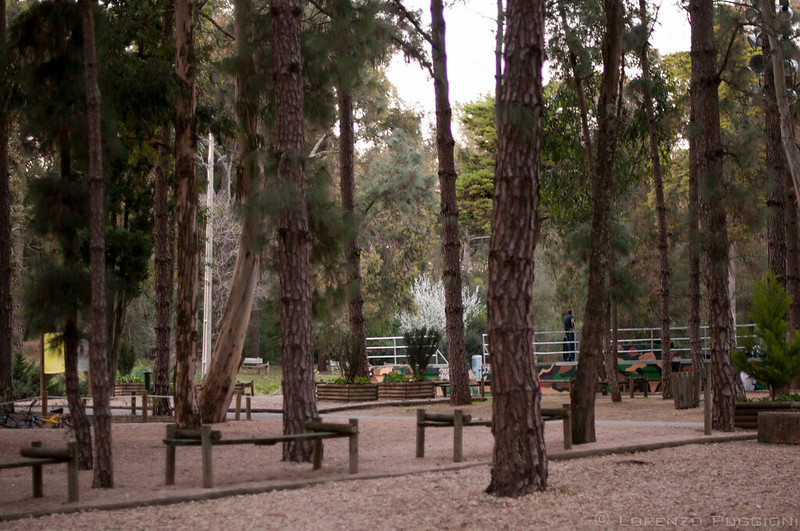
Monsanto Park, often referred to as the Green Lungs of Lisbon, stretches for 10 square kilometers and covers so much ground that within its vast expanse, you can feel that you’ve escaped to a different world entirely. It is, in a word, weird. One moment, you happen upon a shepherd herding sheep next to an abandoned house and in the next, you find the remains of an old mine. Just what is this place? And how did it come to be? Today, we dive into the strange and quirky history of Monsanto Park.
Humble Beginnings
Go back 100 years and the place we call Monsanto Park would be a sad stretch of barren hillsides on the Serra de Monsanto, the highest point in Lisbon. Sitting atop ground rich with limestone formed by the collision of the Eurasian and Iberian plates 70 million years ago, the future Monsanto Park had been deforested and pitted with holes where miners extracted the limestone that helped power the industrial revolution in the 1800s. As Lisbon flourished, intensive farming in the area helped support the city but also took its toll on the soil.
Before the idea to reforest the slopes of Monsanto truly took hold, a fort was built at the top of the hill in 1863 during the reign of King Louis I and completed in 1878, part of a plan to fortify the city of Lisbon. Over time, the Fort of Monsanto transformed into a military prison until the end of World War I, when it turned into a prison for civilians. Astonishingly, the former Fort of Monsanto, after undergoing renovations in 2007, continues to function as a high-security prison to this very day. How many city parks do you know that also have fully operating prisons? We told you that Monsanto is a strange place.
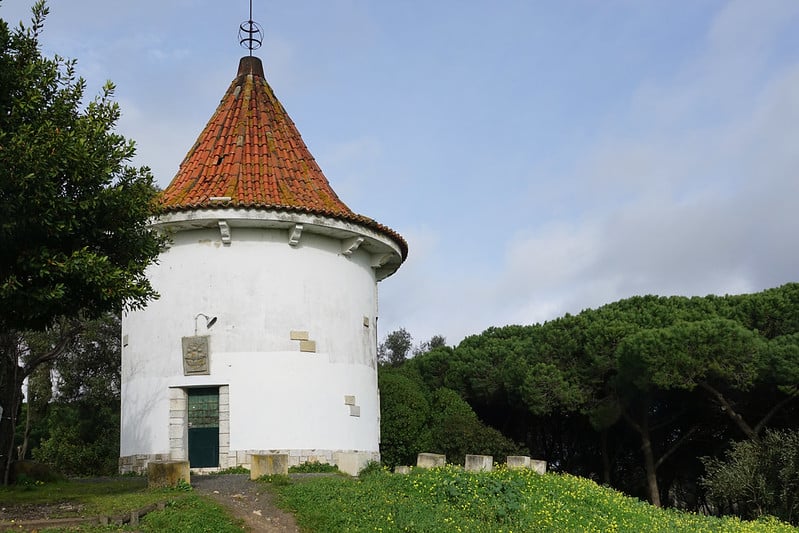
Reforesting Monsanto
After growing calls for conservation and a reforesting of Monsanto Park, the Secretary for Public Works, Duarte Pacheco, finally took on the challenge in the 1930s. Working with plans from architect Keil do Amaral, whose name can be found in one popular area of the park, local farmers and prisoners from the Fort of Monsanto helped to plant the trees that cover Monsanto today!
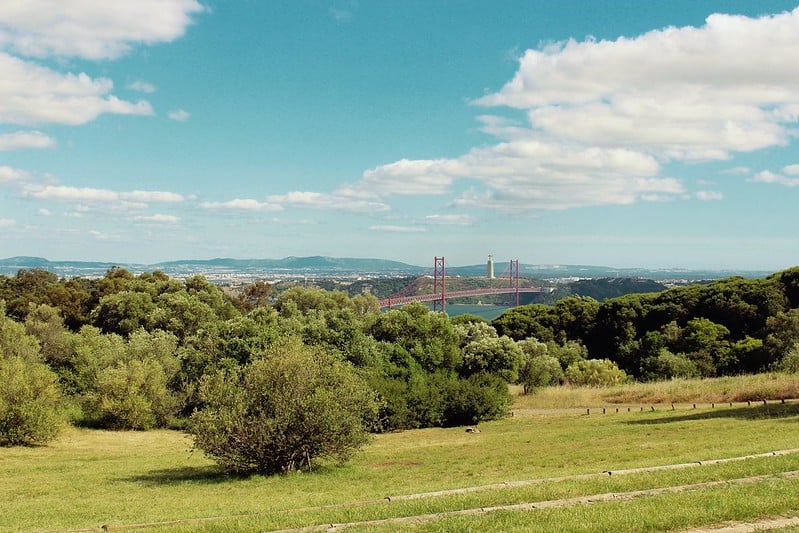
Racing on the Monsanto Circuit
In the 1950s, Monsanto Park’s history took another unexpected turn. Two non-championship Formula One races were held within the park beginning in 1954. Known as a challenging race location because of its varying terrain, Monsanto became the official host of the Lisbon race, known as the Circuito de Monsanto, for the Formula One Portuguese Grand Prix in 1959. Sir Stirling Moss drove home with the win.
After the Monsanto race, the Portuguese Grand Prix returned to Porto for one more year before moving to Estoril permanently on the western side of Lisbon. By the late 1990s, the Portuguese Grand Prix left the racing calendar completely. While you can’t really see any vestiges of the race circuit today, you can imagine the race cars taking some of the hairpin curves that wind through the park and only imagine what the Grand Prix must have been like!
A Viewpoint Like No Other
After its brief stint as a race track, Monsanto was not quite done with its role as a staging ground for ambitious projects. In 1968, the Restaurante Panorâmico de Monsanto opened. With five floors, a 360-degree view of Lisbon, and murals painted by Portuguese artists, it must have been quite the romantic spot to enjoy the city. However, the restaurant only remained open for two years. After later serving as a storehouse and a nightclub, it was completely abandoned in 2001. Sixteen years later, it briefly reopened as a viewpoint before being fenced off completely in 2021. Covered in graffiti and the glass fully removed from its windows, the former restaurant turned viewpoint was truly a sight to behold and an intriguing spot for urban explorers in the middle of the fascinating Monsanto Park.
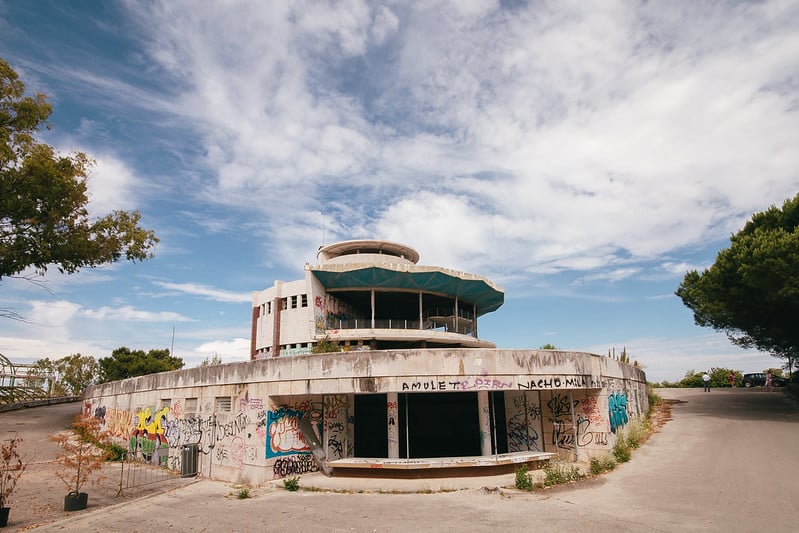
Monsanto Today
We have now reached the Monsanto that you know today, which is currently divided into several protected and relaxation areas. Not only do you have the Monsanto Municipal Camping Park, but you also have the Parque do Alvito, Parque do Alto da Serafina, and Parque dos Moinhos de Santana. The Ecological Park covers 50 hectares of the park, and several picnic areas are available including Vila Guine, Parque da Pedra, Parque de Merendas do Moinho do Penedo, Zona Recreativa do Calhau, Mata de Sao Domingos, and Parque de Merendas do Alvito.
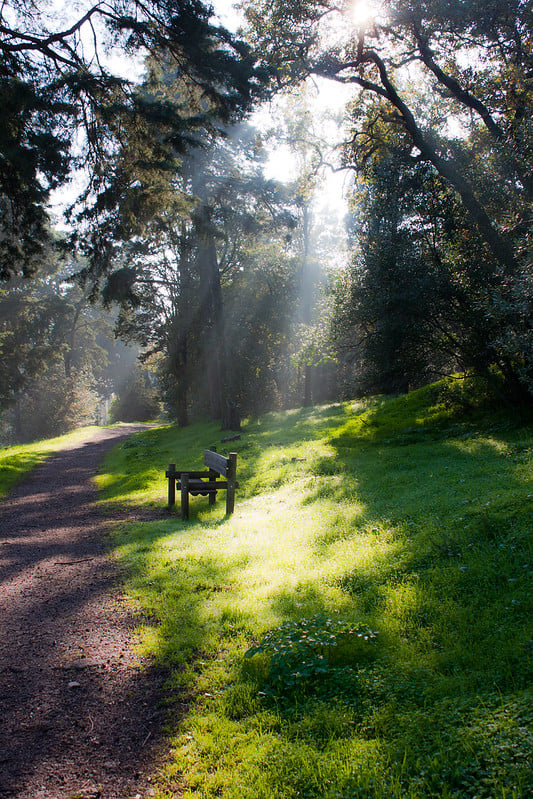
As you explore Monsanto’s trails and mysterious corners, don’t be surprised if you come upon an abandoned pit or old mill along the way. When you see the name Keil do Amaral, you now know the point in Monsanto’s history where he came into play. If you see signs for a prison, you know that is indeed still operating! Despite its quirks, Monsanto is a true gift to the residents of Lisbon today. It is a refreshing part of the city and a popular running and cycling spot. The next time you explore it, remember Monsanto’s fascinating history and how a barren hillside became the green lungs of Lisbon!

